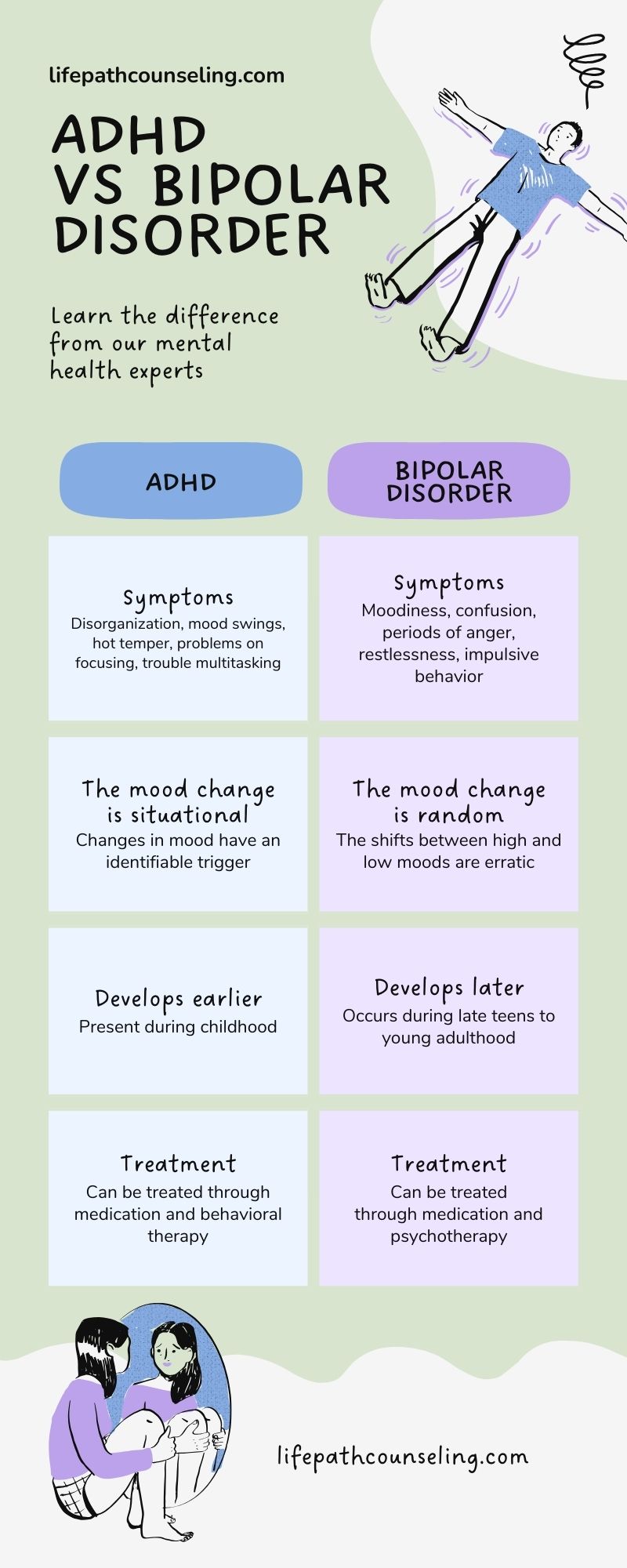Living with Bipolar Disorder
Living with bipolar disorder can be a challenging and often misunderstood experience. This mental health condition is characterized by extreme mood swings that include emotional highs (mania or hypomania) and lows (depression). These mood episodes can affect a person’s energy levels, ability to function, and overall quality of life. As a therapist specializing in bipolar disorder, I often work with individuals who are navigating the complexities of this condition. In this blog post, I want to shed light on what it is like for somebody to live with bipolar disorder, offer some insights and advice for those who may be struggling, and provide examples of behavior that individuals with bipolar disorder may exhibit during manic, hypomanic, or depressive episodes.
The Highs and Lows of Bipolar Disorder
One of the defining features of bipolar disorder is the presence of manic or hypomanic episodes, which are characterized by elevated mood, increased energy, and impulsivity. During these episodes, individuals may feel euphoric, full of ideas, and overly optimistic. They may engage in risky behaviors, such as spending sprees or reckless driving, and may have difficulty sleeping.
On the other hand, depressive episodes in bipolar disorder are similar to those experienced in major depressive disorder and can include feelings of sadness, hopelessness, and worthlessness. People living with bipolar disorder may have trouble concentrating, experience changes in appetite and sleep patterns, and may have thoughts of death or suicide.
Examples of Behavior in Bipolar Disorder
During a manic or hypomanic episode, a person with bipolar disorder might:
- Engage in reckless behavior, such as excessive spending, risky sexual encounters, or impulsive decision-making.
- Have an inflated sense of self-importance or grandiosity, believing they have special powers or abilities.
- Speak rapidly, jump from topic to topic, or have racing thoughts.
- Engage in goal-directed activities with high energy levels, often taking on multiple projects at once.
In contrast, during a depressive episode, a person with bipolar disorder might:
- Feel overwhelming sadness, hopelessness, or emptiness.
- Lose interest in activities they once enjoyed, including hobbies and social interactions.
- Experience changes in appetite or weight, either eating more or less than usual.
- Have trouble sleeping or sleep too much.
- Feel fatigued or have low energy levels.
Bipolar Disorder and Its Impact on Relationships
Bipolar disorder not only affects the individual living with the condition but also has a significant impact on their friends and family. The unpredictable mood swings and behaviors associated with bipolar disorder can strain relationships and create challenges in communication and understanding. During manic or hypomanic episodes, a person with bipolar disorder may be irritable, impulsive, or excessively energetic, which can be difficult for loved ones to manage. On the other hand, depressive episodes can lead to withdrawal, sadness, and difficulty engaging in social activities, which can strain relationships and leave friends and family feeling helpless or frustrated. It’s important for friends and family members to educate themselves about bipolar disorder and seek support from mental health professionals or support groups to learn how to best support their loved one. With understanding, patience, and effective communication, relationships can remain strong and supportive despite the challenges posed by bipolar disorder.
Advice for Those Living with Bipolar Disorder
If you are living with bipolar disorder, it is important to remember that you are not alone. Seeking support from a mental health professional, such as a therapist or psychiatrist, can be incredibly helpful in managing the symptoms of bipolar disorder and developing coping strategies.
ADHD Vs. Bipolar Disorder

Self-Reflection Questions
Getting Help for Bipolar Disorder
If you or someone you know is struggling with bipolar disorder, it’s important to seek help from qualified mental health professionals. The first step in getting help is to reach out to your primary care physician, who can provide a referral to a psychiatrist or therapist with experience in treating bipolar disorder. These professionals can conduct a comprehensive evaluation to diagnose the condition and develop an appropriate treatment plan. Treatment for bipolar disorder typically includes a combination of medication, such as mood stabilizers or antipsychotic medications, and psychotherapy, such as cognitive-behavioral therapy (CBT) or interpersonal therapy (IPT). In addition to professional help, joining a support group for individuals with bipolar disorder can provide valuable peer support and encouragement. Remember, seeking help is a sign of strength, and with the right support and treatment, it is possible to manage bipolar disorder and live a fulfilling life.
Get In Touch
Living with bipolar disorder involves navigating a range of symptoms and behaviors that can significantly impact daily life. By understanding these behaviors and seeking appropriate support, individuals with bipolar disorder can learn to manage their condition effectively and lead fulfilling lives. If you or someone you know is struggling with bipolar disorder, don’t hesitate to reach out for help. With the right support and treatment, it is possible to live well with bipolar disorder.